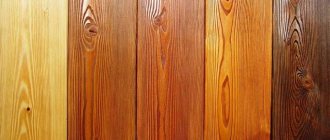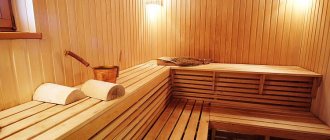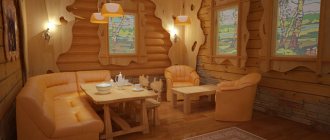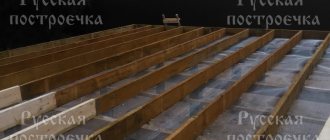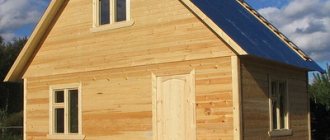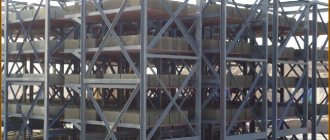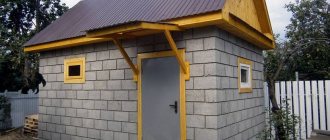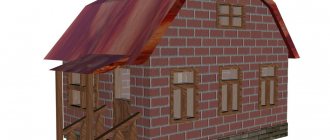A wooden frame - be it a house or a bathhouse - retains heat well, but without additional and effective caulking, this property is reduced to nothing. Any material available on the market can be used as inter-crown insulation in such a building. However, preference should be given to natural ones, which will provide reliable thermal insulation, but not interfere with normal air circulation.
- Building moss - what is it?
- How to harvest moss for a log house
- How to lay moss when assembling a wooden frame
- Moss for log houses - benefits
Synthetic materials for caulking may have higher thermal characteristics, but they are not environmentally friendly . And in a wooden house their use is not very logical.
Based on this, it is best to use centuries-tested natural moss to insulate a wooden frame.
Jute
Jute grows in Asian countries and India. This plant is very similar to reeds or reeds. It is tough and grows in water. Jute contains 49% lignin (a substance that increases the strength of the plant and prevents it from rotting), antiseptics, this is its amazing resistance to moisture. The scope of jute is wide. It is actively used both in everyday life and in various fields of industry and agriculture. But the main use of jute is as insulation between the crowns in wooden buildings made of timber and logs. Jute fiber is crushed, crushed, cut, and rolled. This is how jute felt is made.
Jute is not brittle, it does not require pre-moistening, it is flexible and soft. Convenient for installation, as it is sold in the form of a tape. Jute is a water-repellent material; after getting wet, it dries quickly, maintaining its properties. To achieve a tighter fit of logs or beams, additional insulation, eliminate further blowing, as well as less moisture ingress, the jute tape is taken wider than the groove of the log. Jute has another important feature. Birds and rodents do not like it.
Jute insulation is popular among builders .
It is easy to use, strong, durable, does not rot, repels water, is not subject to deformation, and does not contain straw. Jute has an attractive appearance, it has the color of a freshly cut tree.
Brick baths
Brick is an environmentally friendly material, but only in addition to being decorative, because various additives are used in its manufacture. Of all the existing bricks, choose lightweight varieties with existing voids inside; baths made of such material will last a long time. The main advantage of brick buildings is their fire resistance and resistance to biological damage. You can build a brick bathhouse on several floors; it will be stable and can be erected easily and quickly.
The disadvantages include the high cost of a brick; building a bathhouse from it can cost several times more than a wooden one. In addition, it is necessary to carry out interior finishing; it is advisable to cover it with clapboard or linden boards. The structure of a brick bathhouse is heavy, so you need to build a powerful, strong strip foundation, which requires significant financial costs. Brick also has good thermal conductivity, so all walls must be carefully insulated.
Linen
Flax is a plant growing in Russia, Belarus, and Europe. Linen is very durable, has heat-saving, heat-transfer, and antiseptic properties. Linen fiber is used to produce fabrics that are used in various branches of light industry. Insulation (flax wool and tow) is made from flax. Ligin in flax is only 7% , which makes it unstable to the conditions of our climate. Rolled insulation – flax wool – is used as insulation in wooden houses and bathhouses. This is a special material for inter-crown gaskets. Linen is the most unstable insulation material. The service life of flax fiber is 1-3 years . It quickly rots when moisture gets on it and quickly disintegrates. Birds and rodents love this material.
It is loved by bedbugs, moths and many other insects. In view of this, it is necessary to antisepticize wood and all lumber. The roof extension in buildings where flax was used as insulation must be at least a meter. The main advantage of this material is environmental safety and excellent thermal conductivity.
Flax fiber insulation has proven itself to be excellent when caulking seams between logs, filling gaps when installing windows, doors, and insulating roofs, floors and ceiling surfaces. Linen is an excellent soundproofing material.
How to harvest moss for a log house
Collecting moss is a rather painstaking and time-consuming process, as it is harvested by hand. Each species has its own collection method and drying technology.
For example, ordinary white moss has a fairly fragile texture so as not to be damaged; the collected material is piled up (like hay) to dry. It is best to collect this moss in sunny and dry weather. It is in this weather that the moisture concentration in it is lower, which means the drying process will be easier.
The best time to collect cuckoo flax is a cloudy day . The fact is that this species reacts poorly to direct sunlight. The quality of flax is also affected by the place where it is collected. For example, the one found in the forest under the trees will be of better quality, since its humidity will be much lower than that collected in the swamps. This will also reduce the drying time of the material.
The collected cuckoo flax is laid out on a straight surface in strips. After drying using this technology, you get something like a tape heat insulator. This material is very convenient to use as an interventional gasket.
In total, it takes from a week to two to dry moss for a log house.
What do jute and flax have in common?
The technology for laying jute tape is similar to the technology for laying flax. The width of the tape should be wider than the groove of the log so that the edge is not cut off. Laying insulation from jute and flax does not require knowledge of special technologies; any builder can easily cope with these materials. Both materials are natural and therefore environmentally friendly. Both insulation materials are produced in a form convenient for installation - tape tow or batting.
Both flax fiber and jute fiber have a beneficial effect on the human body due to their natural properties. They have antiseptic properties, are breathable, and resistant to sunlight.
The main differences between jute tow and tape:
- The most important difference lies in the structure of this material. For example, tape on the building materials market is supplied in spools, the width and length of which are strictly regulated. Jute tow is supplied in bags or bales. Requires additional ventilation from dampness.
- Depending on the structure, the method of using these insulation materials differs. For example, jute tape is used directly at the time of construction of a wooden house. Its width is selected with a small margin. She is simple and easy to work with. For laying, it is rolled out on the surface of the crown, cut to the required length, and then pressed with the top crown of logs. As for the length reserve, this is done in order to subsequently close the newly formed holes between the crowns of the house, which were formed during the shrinkage of the walls. In turn, tow can also be laid on the surface of the crown. But doing it is much more difficult than working with tape. Therefore, in modern construction, tow is a secondary insulation material that is used after the shrinkage of a wooden house has been completed. It is used to close cracks in logs, inter-crown holes and other areas that violate thermal insulation.
- Jute tow is the softest material, so it is considered easier to work with. In turn, the tape is the most elastic and is not at all suitable for closing holes in the walls of a house. For the same reason, the tape is more resistant to bird attacks.
This material was prepared by the administrators of the Lesnoy Dom website
Website address: https://www.foresthouse.ru/
You can buy the insulation materials mentioned in the article by calling in Moscow +7 (495) 971-57-20.
Comparison and how they differ between jute and linen
- Jute fiber is more durable; it will last more than 70 years . Flax fiber will last 1-3 years . Due to the content of a large amount of ligin, jute is resistant to rotting and is able to release moisture. Linen absorbs moisture perfectly, it is susceptible to rotting and destruction. In buildings where flax is used as insulation, logs require mandatory antiseptic treatment.
- Unlike jute, the appearance of flax fiber leaves much to be desired.
- Jute fiber is denser in thickness and more elastic.
- Mice, birds and many insects are partial to flax, which cannot be said about jute fiber.
- Jute insulation is more rigid, therefore less pliable in installation and more difficult to work with.
- Flax fiber is a less expensive insulation material than jute.
Log baths
Log baths were built by our grandfathers back in the last century. Now they are no less popular. A sauna built from logs is environmentally friendly. External and internal decoration of the walls can be done at will, although they already look good. It is advisable to build a columnar or strip foundation for a log bathhouse, you need to look at its dimensions and the weight of the wooden material.
The disadvantages of building a bathhouse from logs include the fact that it will be necessary to insulate the walls and caulk. And also the fact that it will be impossible to cope with heavy logs alone; you will need to use special equipment. And cutting out corner joints is not easy.
But still, a log bathhouse is a good, one might say the best, option in terms of ecology.
Types of moss for interventional insulation
Usually two types of moss are used, white, also known as sphagnum, and red, the so-called “cuckoo flax”.
Red moss has some advantages over white: it is less moisture-absorbing than sphagnum, durable and lightweight, and thanks to its long fiber structure, it makes installation much easier. By laying such moss crosswise, you can be sure that the moss will not fall out of the inter-crown space and be blown away by the wind.
Kukushkin flax is elastic and hard, it is much stronger than sphagnum and contains more substances that prevent rotting and fungal growth. The only disadvantage of this type of moss is that it grows in rather limited areas and harvesting it can be very difficult.
Moss as insulation for log crowns
Sphagnum is much more common - in almost any swampy area you can find it in abundance. It is white moss that is used by many builders precisely because it is much easier to harvest this material and in any quantity, despite the fact that in many respects it is inferior to cuckoo flax. Over time, sphagnum undergoes destruction faster, but by and large, this is its only significant drawback over red moss: it retains heat just as well and contains, albeit in slightly smaller quantities, the same antiseptics. You should not think that only bad builders use sphagnum - sometimes they simply may not have a choice due to the low prevalence of cuckoo flax. White moss is an excellent material and is quite sufficient for the average life of a log house.

